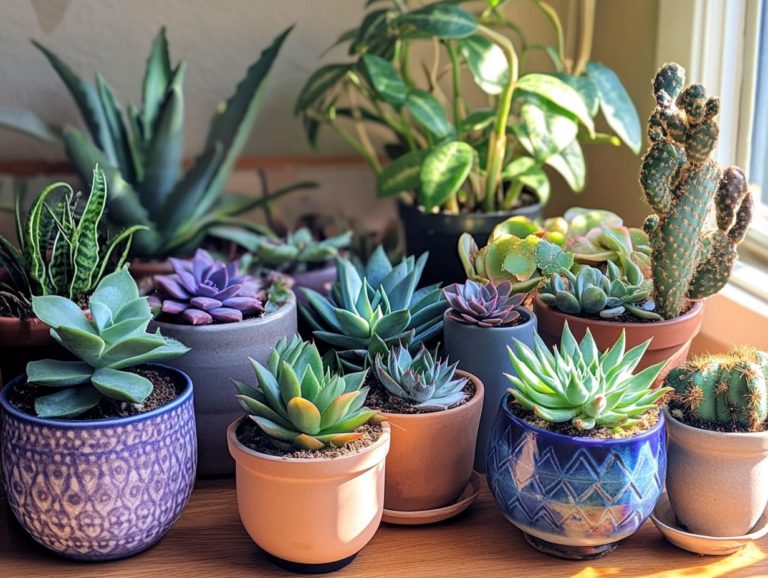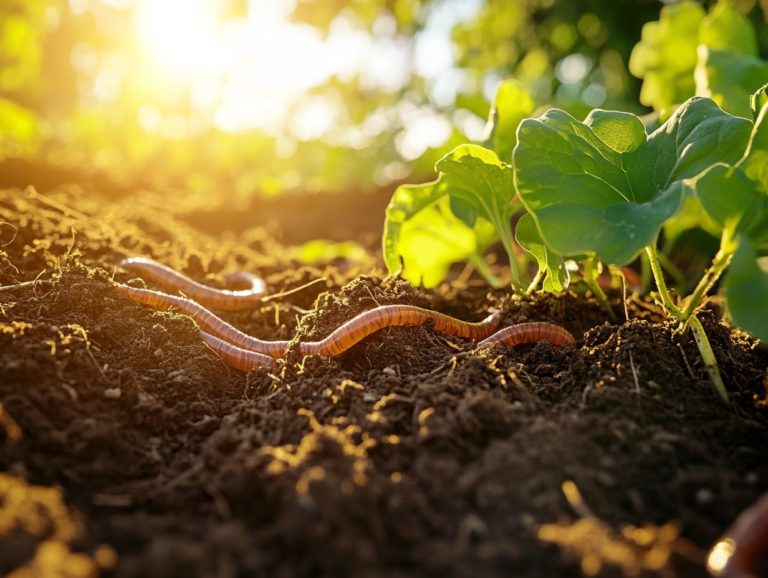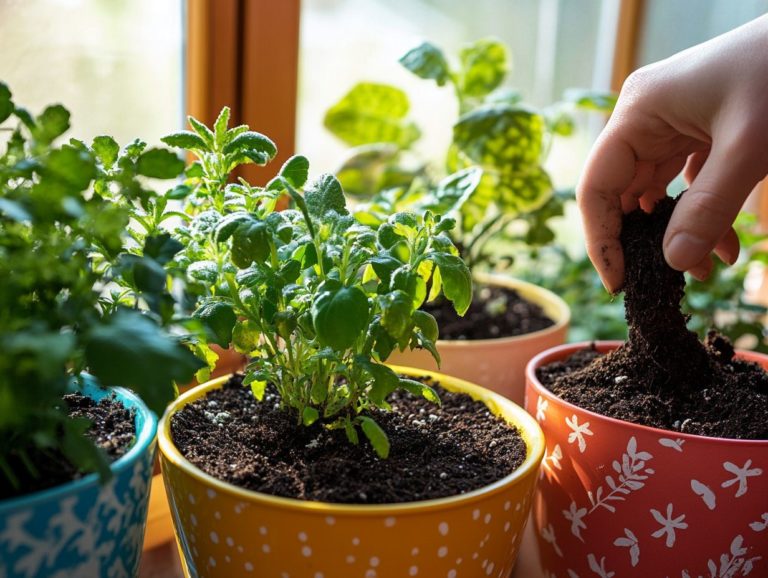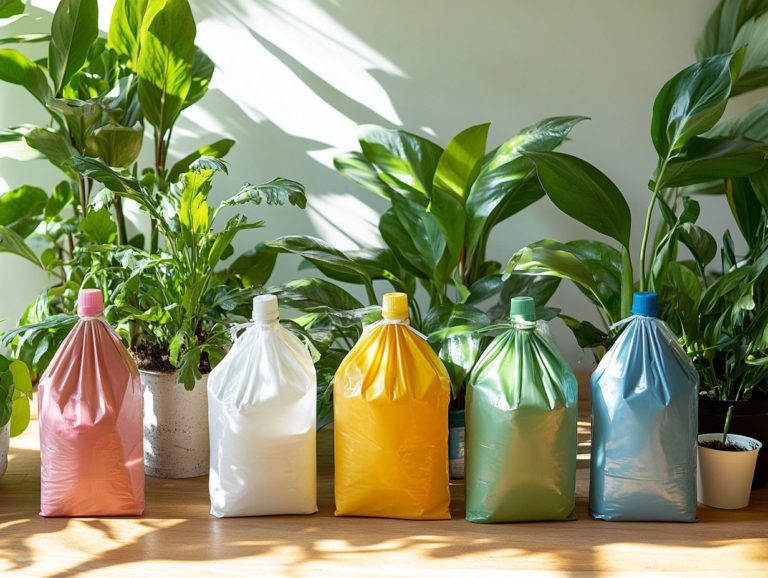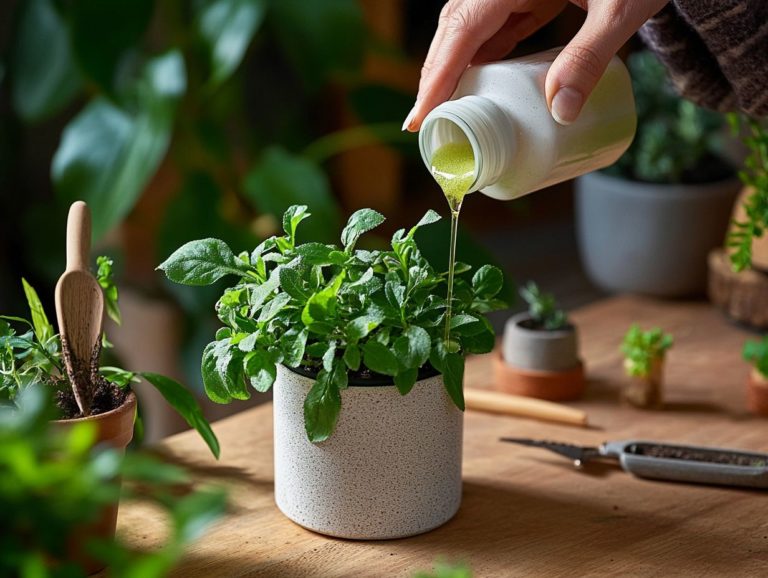Creating the Perfect Indoor Plant Soil Mix
When it comes to indoor gardening, the foundation of your plants’ health lies in the soil.
Soil is crucial for plant growth and vitality. Every plant enthusiast should understand its importance. This guide will walk you through the vital components of an effective soil mix, assist you in selecting the right blend for various types of plants, and empower you to create your own custom soil.
This guide also addresses common mistakes and provides solutions to ensure your indoor plants thrive.
Get ready to discover the secrets of crafting the perfect soil mix for your indoor plants!
Contents
- Key Takeaways:
- Importance of Soil in Indoor Plant Care
- Components of a Good Soil Mix
- Choosing the Right Soil Mix for Your Plants
- Making Your Own Soil Mix
- Caring for Indoor Plants with the Right Soil
- Common Mistakes to Avoid with Indoor Plant Soil
- Frequently Asked Questions
- What is the importance of creating the perfect indoor plant soil mix?
- What are the key components of a perfect indoor plant soil mix?
- How do I know if my indoor plant soil mix needs to be changed?
- How can I create my own indoor plant soil mix?
- Can I reuse old soil mix for my indoor plants?
- How often should I change my indoor plant soil mix?
Key Takeaways:
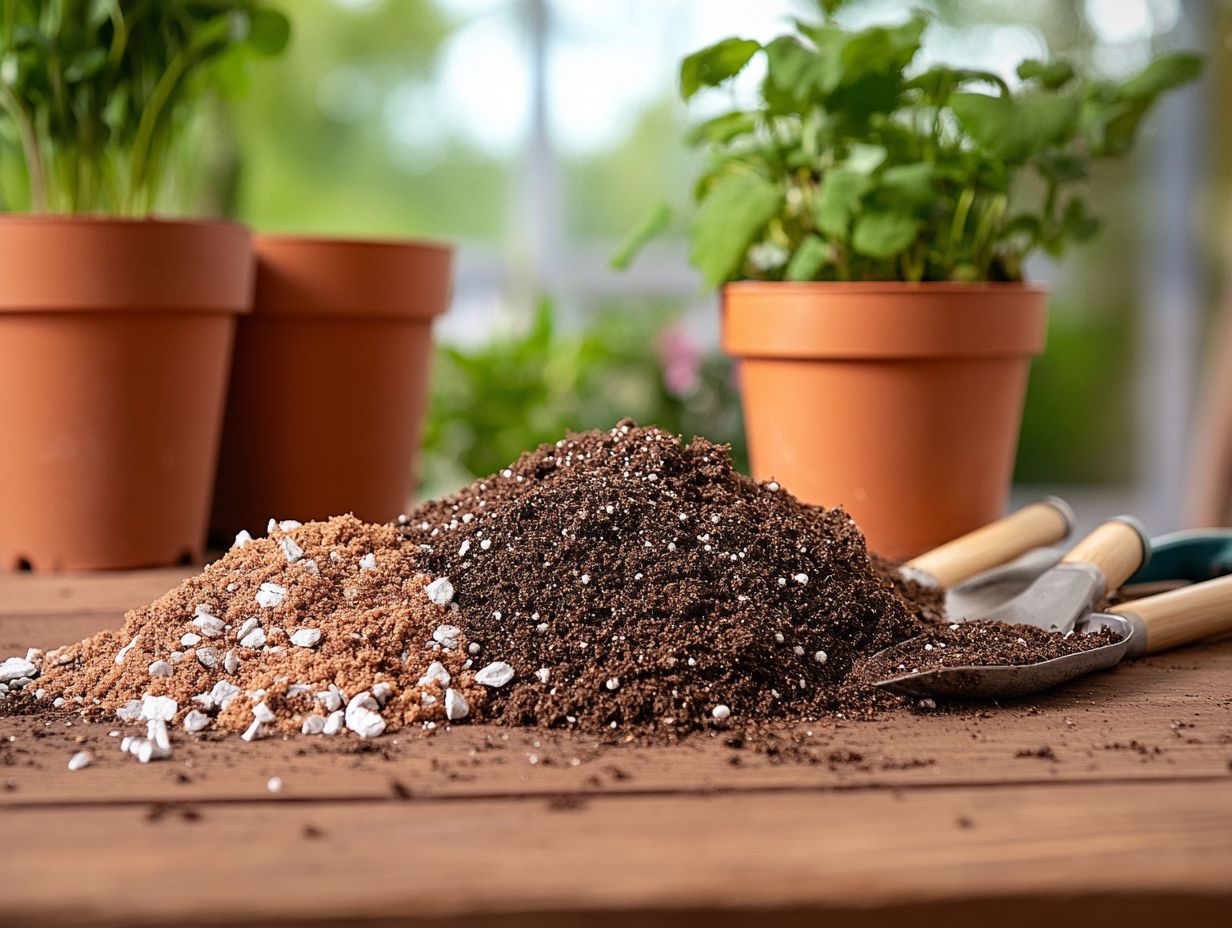
- A good soil mix is crucial for healthy indoor plant growth.
- Key ingredients in a soil mix serve different functions, such as providing nutrients and promoting drainage.
- When choosing a soil mix, consider the specific needs of your plants and their type.
Importance of Soil in Indoor Plant Care
Soil is vital in your indoor plant care routine. It directly affects the health and vibrancy of your houseplants. High-quality soil offers essential nutrients, serving as a reliable foundation for optimal moisture retention and drainage two key components for robust plant growth.
When you don t use the right soil mix, your indoor plants may encounter a host of issues like poor drainage or compaction, which can lead to root problems and jeopardize their survival. Knowing what makes good soil is key for anyone passionate about container gardening.
Role of Soil in Plant Growth and Health
Soil is absolutely essential to the growth and health of your indoor plants, providing the crucial support and nutrients that help them thrive.
To ensure your plants reach their full potential, it’s vital to understand soil characteristics. Take pH levels as an example; pH levels refer to the acidity or alkalinity of the soil, impacting nutrient availability, which influences how effectively your indoor plants absorb essential minerals. Likewise, proper aeration, ensuring air can circulate through the soil, is vital for root health. To achieve the right soil mix, consider learning how to mix your own potting soil.
Incorporating organic compost is a game-changer, enriching the soil with beneficial microorganisms and improving moisture retention. This creates an ideal environment for nurturing a diverse array of indoor species. To learn more about soil care, regularly evaluate your indoor soil conditions and explore how to maintain soil health for indoor plants to enhance plant health and achieve amazing results!
Components of a Good Soil Mix
A quality soil mix is vital for the flourishing growth of your houseplants, and grasping its components is the foundation of successful indoor gardening.
Typically, it blends ingredients like peat moss, coco coir, perlite, and vermiculite to craft a harmonious environment that enhances both drainage and moisture retention. Each component has its distinct role, whether it’s boosting soil aeration or supplying essential nutrients, making the right mix critical for the diverse array of indoor plants you may cultivate. For more insights, check out the top soil amendments for healthy indoor plants.
Key Ingredients and Their Functions
Understanding the key ingredients in a soil mix and their functions is essential for you to achieve optimal plant health and growth. Each component plays a significant role take organic compost, for instance. It enriches the soil with essential nutrients and promotes beneficial microbial activity, creating a thriving ecosystem for your plants.
Using drainage mediums like perlite or vermiculite is another crucial step; these prevent waterlogging, ensuring that roots have access to the moisture and oxygen they need. Additionally, knowing how to use compost in indoor plant soil can further improve the health of your plants. Different soil types, whether sandy, clay, or loamy, bring their own unique properties that can either enhance or hinder water retention.
Together, these elements form a balanced environment that caters not just to your plants’ immediate needs but also fosters long-term sustainability and resilience across various growing conditions. For more information on creating the perfect environment, check out this guide on how to choose soil for her indoor garden.
Choosing the Right Soil Mix for Your Plants
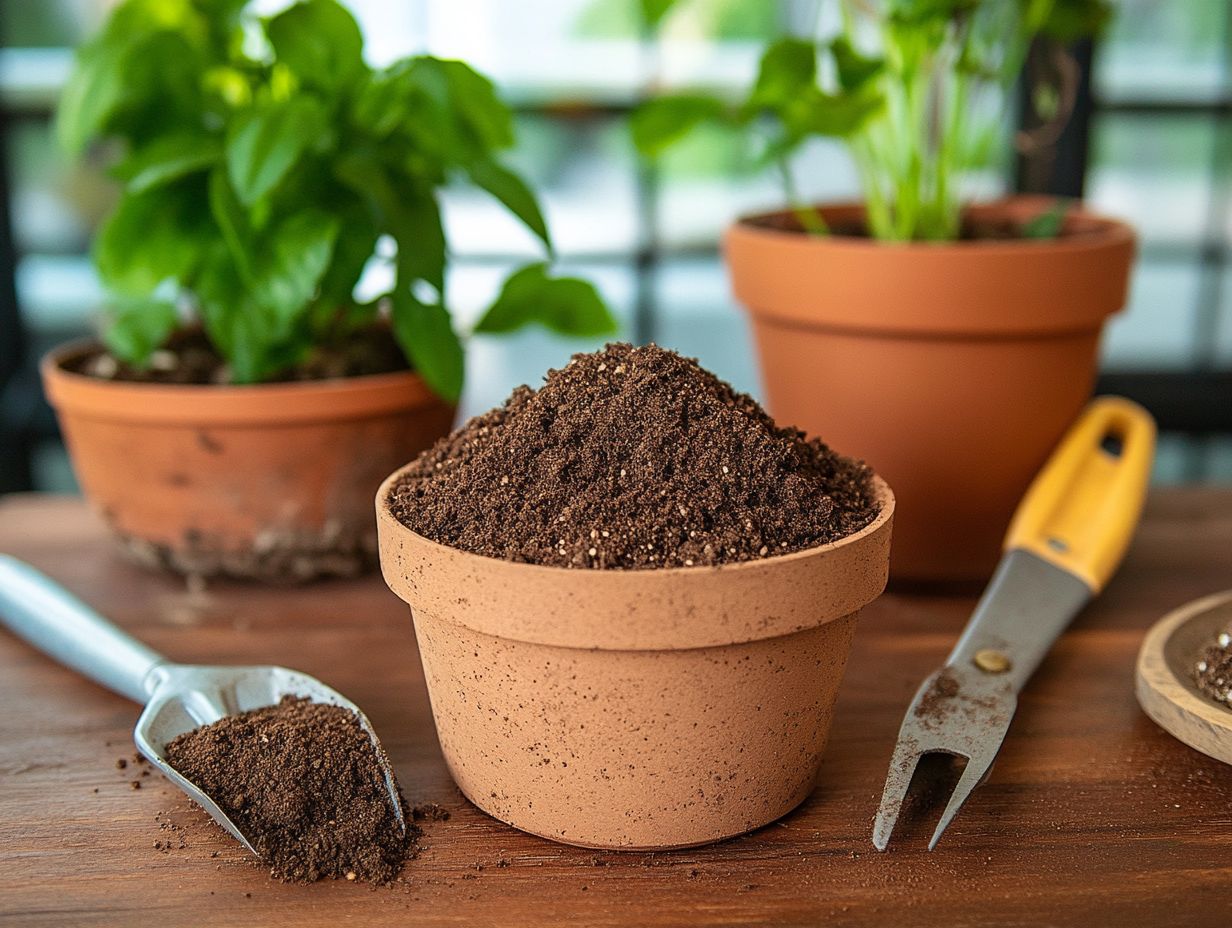
Choosing the right soil mix can make or break your plants health! Different plants have unique requirements when it comes to soil types and moisture levels.
By selecting a mix that provides excellent drainage and meets your houseplants’ specific needs, you can greatly enhance their health and vitality. For those interested in creating the perfect environment, learning how to amend soil for indoor plant growth is essential. Whether you opt for a commercial mix or create your own custom blend, understanding your plant’s preferences is crucial for successful container gardening.
Considerations for Different Types of Plants
When choosing a soil mix, consider the unique needs of your indoor plants. Each variety has specific requirements for moisture retention and drainage.
For example, succulents thrive in well-draining soil mixed with sand or perlite to prevent root rot. In contrast, tropical ferns prefer a blend that holds moisture well and includes organic matter, allowing their roots to absorb essential nutrients without becoming waterlogged. If you’re interested in creating the perfect soil for your plants, check out these DIY potting mix recipes for indoor plants. Leafy greens like herbs or lettuces benefit from a balanced mix that supports both air circulation and moisture.
Regularly repotting these plants and adjusting their soil compositions is crucial for their continued success in your home.
By customizing the soil to meet each plant’s needs, you foster growth and create a flourishing indoor garden.
Making Your Own Soil Mix
Creating your own soil mix is a rewarding endeavor. It allows you to design a custom blend that perfectly suits your indoor plants’ needs.
With a straightforward DIY recipe, you can incorporate bulk ingredients that promote optimal growth, ensuring your green companions thrive.
DIY Recipes and Tips
A variety of DIY recipes can help you create the perfect potting mix, specifically designed to support your plants’ health and growth.
These recipes often include essential ingredients like peat moss, vermiculite, and compost, each playing a critical role in moisture retention, aeration, and nutrient supply. For instance, peat moss helps maintain a balanced pH, vital for nutrient uptake. Additionally, understanding the essential soil components for indoor plants can enrich the soil with organic matter and introduce beneficial microorganisms that your plants will benefit from.
Consider using organic fertilizers such as bone meal or worm castings to boost your soil’s fertility, promoting robust plant development. Understanding these components and how they work together allows you to easily craft a mix that nurtures vibrant plants. For detailed strategies, check out greenhouse soil management for indoor plants.
Caring for Indoor Plants with the Right Soil
Caring for your indoor plants requires a deep understanding of the essential role that soil plays in their health. This involves proper watering techniques and regular soil tests to ensure optimal conditions for thriving plants.
Watering, Fertilizing, and Repotting

Effective watering, fertilizing, and repotting practices are essential for ensuring your indoor plants not only survive but truly thrive.
Understanding the specific needs of each plant species is key to enhancing their growth and vitality. For instance, some indoor plants thrive in a living soil for houseplants that dries out completely between waterings, while others flourish in consistently moist conditions.
The method you choose for watering whether top irrigation or bottom-soaking can significantly influence how well your plants absorb water. Incorporating organic fertilizers into your routine enriches the soil, providing essential nutrients that encourage vibrant growth.
Stay attentive to signs of overcrowding or unhealthy soil to determine the right time for repotting, allowing your plants to spread their roots and improve their overall well-being.
Ready to enhance your indoor garden? Experiment with your soil mix and share your gardening experiences!
Common Mistakes to Avoid with Indoor Plant Soil
Avoiding common mistakes with indoor plant soil is essential for maintaining the vitality of your houseplants. Missteps can lead to serious problems, including soil compaction and pest infestations, like fungus gnats.
Prioritizing the right soil practices will ensure your plants thrive in their environment.
Understanding soil issues is crucial for the health of your indoor plants. As an indoor gardener, you may face challenges like soil compaction. This occurs when soil becomes too hard, making it difficult for roots to grow, and limits oxygen availability.
Poor drainage can create waterlogged conditions that are detrimental to your plants. Moisture retention can also become an issue, causing the soil to be either overly saturated or too dry. Both situations can stress your plants significantly.
To tackle these challenges, consider amending your soil with organic matter like compost. This simple step can enhance aeration and improve drainage.
Using mulch can help retain moisture during dry spells and reduce erosion during heavy watering.
With these strategies, you can ensure your plants thrive throughout the year.
Frequently Asked Questions
What is the importance of creating the perfect indoor plant soil mix?
The right soil mix provides essential nutrients and a balanced environment for your indoor plants to thrive and grow to their full potential.
What are the key components of a perfect indoor plant soil mix?
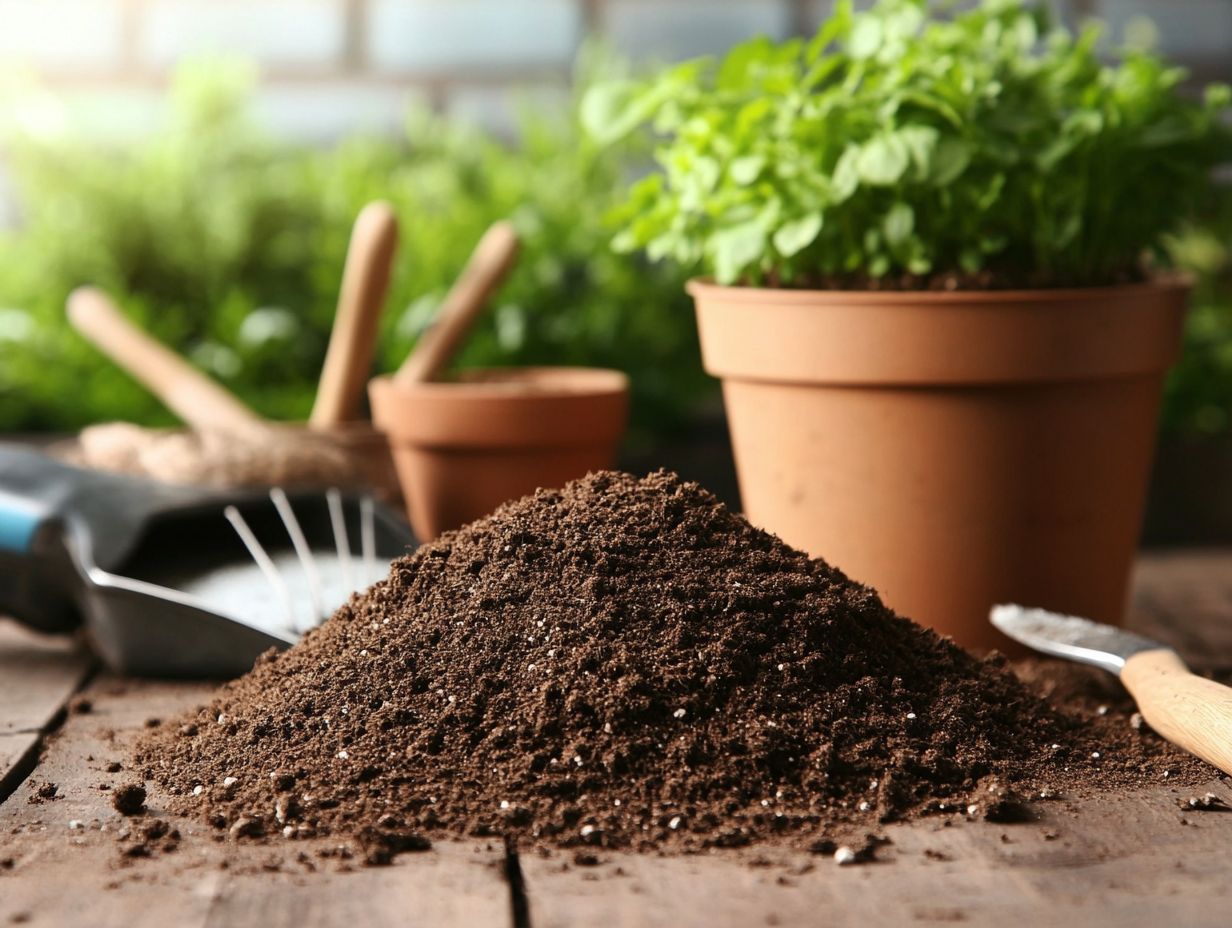
A perfect indoor plant soil mix should include a combination of organic matter, such as compost or peat moss, and inorganic matter, like perlite or vermiculite. This mix provides a good balance of nutrients, moisture retention, and aeration.
How do I know if my indoor plant soil mix needs to be changed?
If your indoor plants are not growing well or showing signs of stress, like yellowing leaves or wilting, act fast! It s crucial to change the soil mix to prevent further stress. A compacted soil mix or one that has a foul smell is also a good indicator that it needs to be replaced.
How can I create my own indoor plant soil mix?
You can create your own indoor plant soil mix by combining equal parts of organic matter, such as compost or peat moss, with inorganic matter, like perlite or vermiculite. Feel free to add additional ingredients like sand, bark, or coconut coir to customize the mix for specific plants.
Can I reuse old soil mix for my indoor plants?
Yes, you can reuse old soil mix for your indoor plants. However, it’s important to replenish the nutrients by adding compost or fertilizer. Also, make sure to remove any debris or dead plant material from the old mix.
How often should I change my indoor plant soil mix?
It is recommended to change your indoor plant soil mix every 1-2 years, as it can become compacted and depleted of nutrients over time. However, you can refresh the soil mix by adding new organic and inorganic matter as needed throughout the year.

